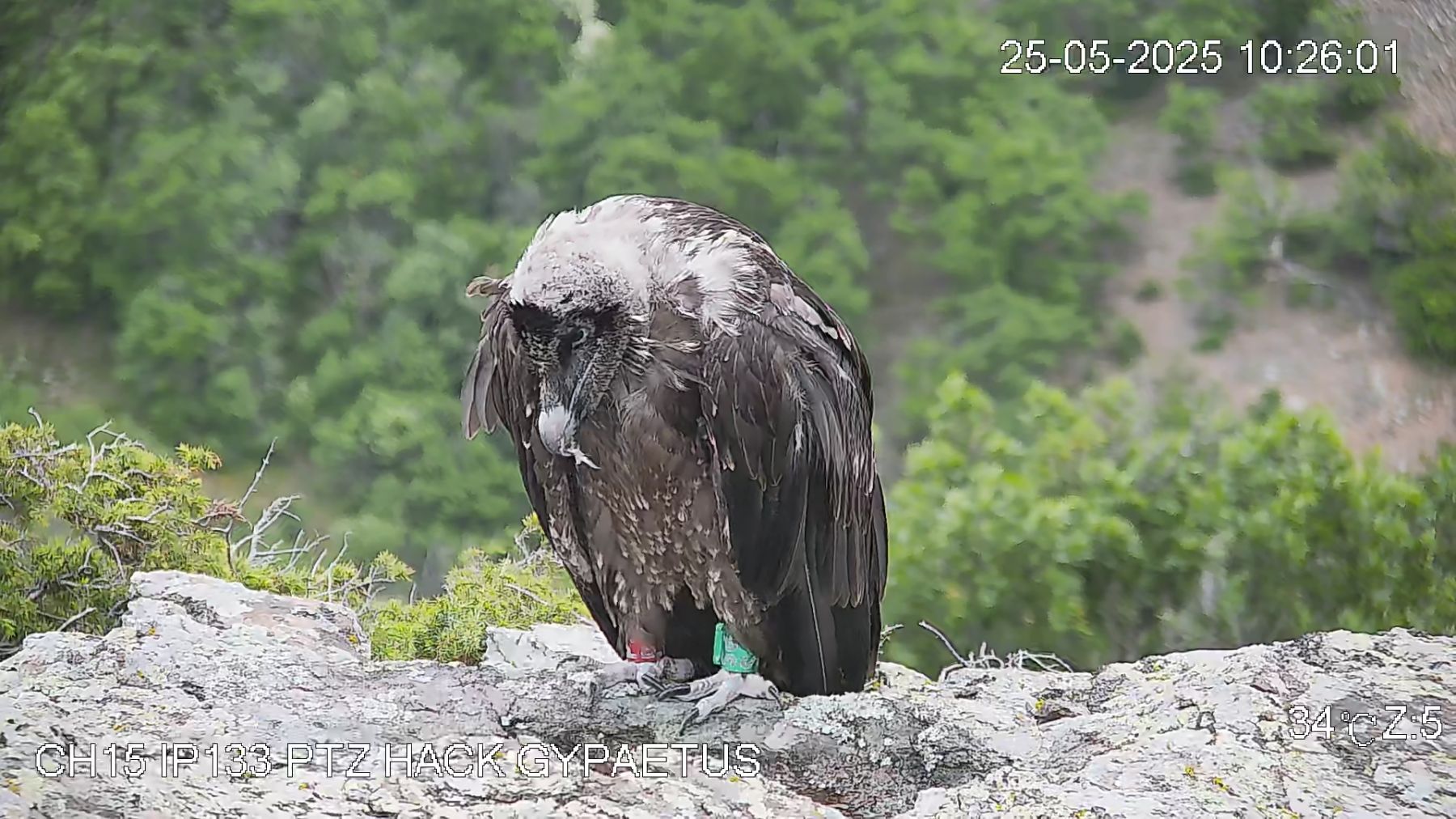
Captive breeding can play a vital role for conservation programmes of rare species, and in the case of the Bearded Vulture, it is a critical component to reintroduce or restock their populations in the wild.
The Vulture Conservation Foundation (VCF) has produced a film showcasing the efforts it takes to breed a Bearded Vulture chick in captivity. The specific chick, BG1055, hatched at Vallcalent Specialised Breeding Centre and has a very interesting story behind it.
Breeding BG1055

To breed Bearded Vulture chick BG1055, the VCF started getting ready for the breeding season months ago. It involved preparing its future foster parent, Kajazo, who is actually a human imprinted male and mates with his human keeper. At the same time, the staff was also looking after the other breeding pairs of the centre, including Joseph (male) and M. Antoinette (female) who laid the clutch that became BG1055! The centre artificially incubates the eggs, and this involves taking a number of steps to aid the hatching process, including thermal shock, which is a protocol developed by the VCF. Once the chick hatches, it is looked after continually after the staff until it is ready to be adopted by its foster parent. Watch the video below and see all the details regarding breeding a chick in captivity – a very fascinating and informative story.
Vallcalent Specialised Breeding Centre
The Centre de Fauna de Vallcalent is property of the Generalitat de Catalonia. Thanks to an agreement the VCF made with Generalitat de Catalonia, the VCF is managing the Bearded Vulture Specialised Breeding Unit within the centre. Following bird distribution strategy between specialized breeding centres, this Unit plays a crucial role inside the EEP, because it specialises on artificial incubation, receiving those pairs which are reproducing very badly or not at all in other entities, and are requiring technical support.
There are currently three breeding pairs in Vallcalent, and two additional pairs that reached their sexual maturity, but did not breed this year. These pairs are the most challenging ones within the Bearded Vulture EEP and are sent to Vallcalent Specialised Breeding Centre because with the expertise and experience of Alex Llopis (VCF’s Vultures Captive Breeding Manager & Bearded Vulture EEP Coordinator) and the facilities at the centre these pairs have a better chance of breeding.
Captive-breeding Bearded Vultures
The Vulture Conservation Foundation (VCF) coordinates the Bearded Vulture Captive Breeding Network (EEP) of zoos, specialised breeding centres, recovery centres and private collections on behalf of EAZA. This involves closely working with our colleagues across Europe to ensure the best breeding results from the 178 birds within the Network. They first reported on the breeding season kicking-off in early October, the egg laying period starting in December and the first chick hatching in January!
To follow the news of the breeding season, follow #BeardedVultureBreedingSeason on Facebook, Twitter, Instagram and LinkedIn.



